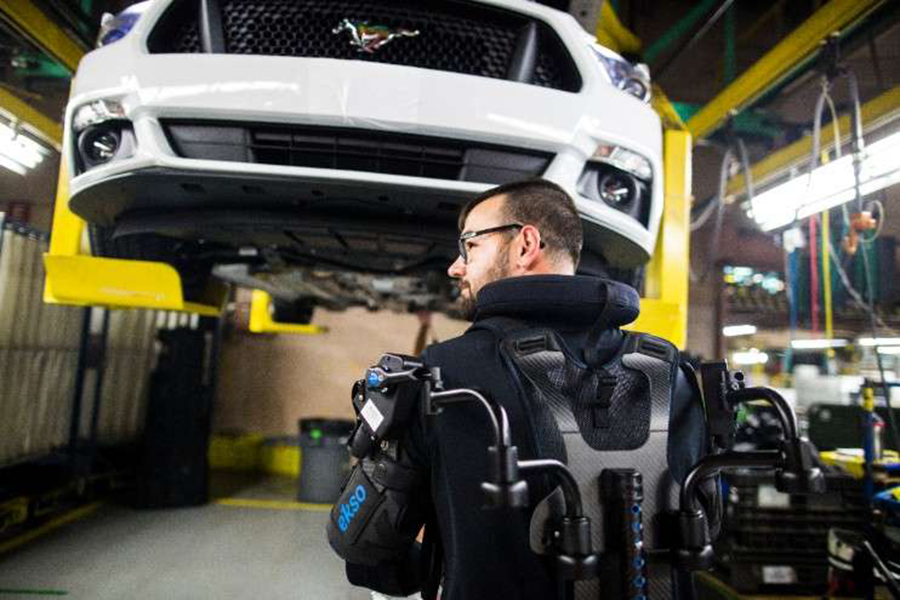Ford Motor Company unveiled its plan to use wearable technology to help ease the load on its human workers. Following successful trials, the company is now introducing exoskeleton vests in 15 of its plants in seven countries.
Despite the emergence of smart factories, sensors, and data analytics, much of the heavy-duty operations in today’s industry still rely heavily on human workers.
Related LG’s New Exoskeleton or ‘Wearable Robot’ Promises to Give Users Superhuman Strength
Over time, the demand for such work can cause stress, injury and accidents. But, Ford hopes that exoskeletons may be able to reduce some of the strain by augmenting the workers’ bodies.
“Building vehicles is physically a tough job,” says Bruce Hettle, Ford group vice president, Manufacturing and Labor Affairs. “We care about our employees and are trying to help them do their jobs with the least amount of wear and tear on their bodies possible.”
The vest used by Ford is called the EskoVest, an exoskeleton designed by Ekso Bionics.
The vest fits workers ranging from 5 feet 2 inches tall to 6 feet 4 inches tall and provides lift assistance from five pounds to 15 pounds per arm. It is unpowered and uses spring assistance to provide between 5 and 15 lb (2.2 and 6.8 kg) of lift support per arm.
Ford workers say it’s comfortable because it’s lightweight and not bulky, allowing them to move their arms easily.

“I don’t want the EksoVest to ever leave,” said Nick Gotts, an original EksoVest operator at Flat Rock Assembly, “Any job that’s overhead, I wouldn’t work without it.”
Ford piloted the vest at 2 of its plants in Michigan. The feedback from operators helped improve the technology before the company rolled it out globally.
“At Ekso, our mission is to augment human capability with wearable technology and robotics that help people rethink current physical limitations and achieve the remarkable,” said Jack Peurach, president and chief executive officer of Ekso Bionics. “Advancing our collaboration with a global leader like Ford, represents a major step forward in achieving our mission as our EksoVest is deployed around the world to enhance the well-being of its work force.”
The EksoVests are being used in all of Ford’s North American plants and in plants in Asia Pacific, Europe and South America.
Read more Industrial Exoskeletons Are Here With More to Follow
The use of exoskeletons dates back to the least 60s when GE developed a huge prototype for the US military and they’ve shown promise in helping people with spinal cord injuries walk.
Analysts expect the business of providing technology to augment the human workforce to boom in the coming years – from $68 million in 2014 to $1.8 billion by 2025.












